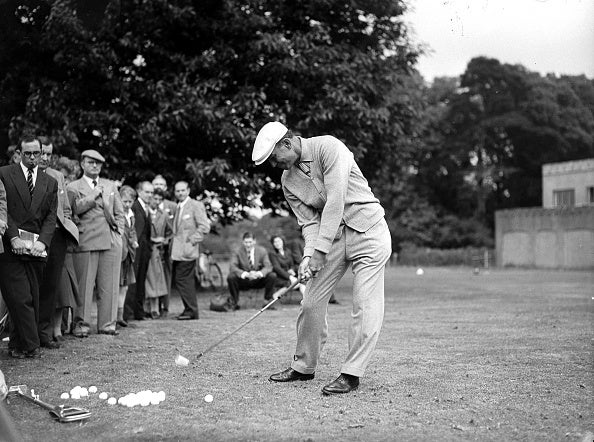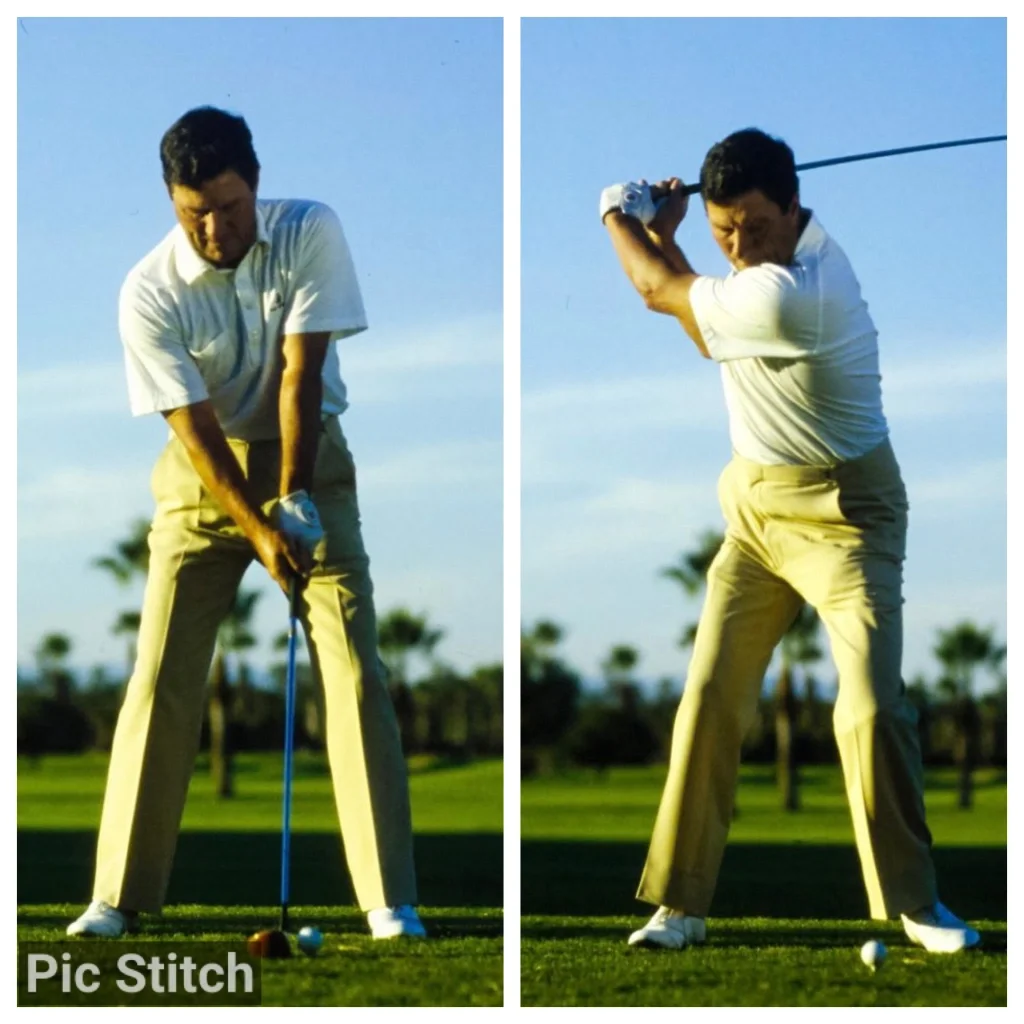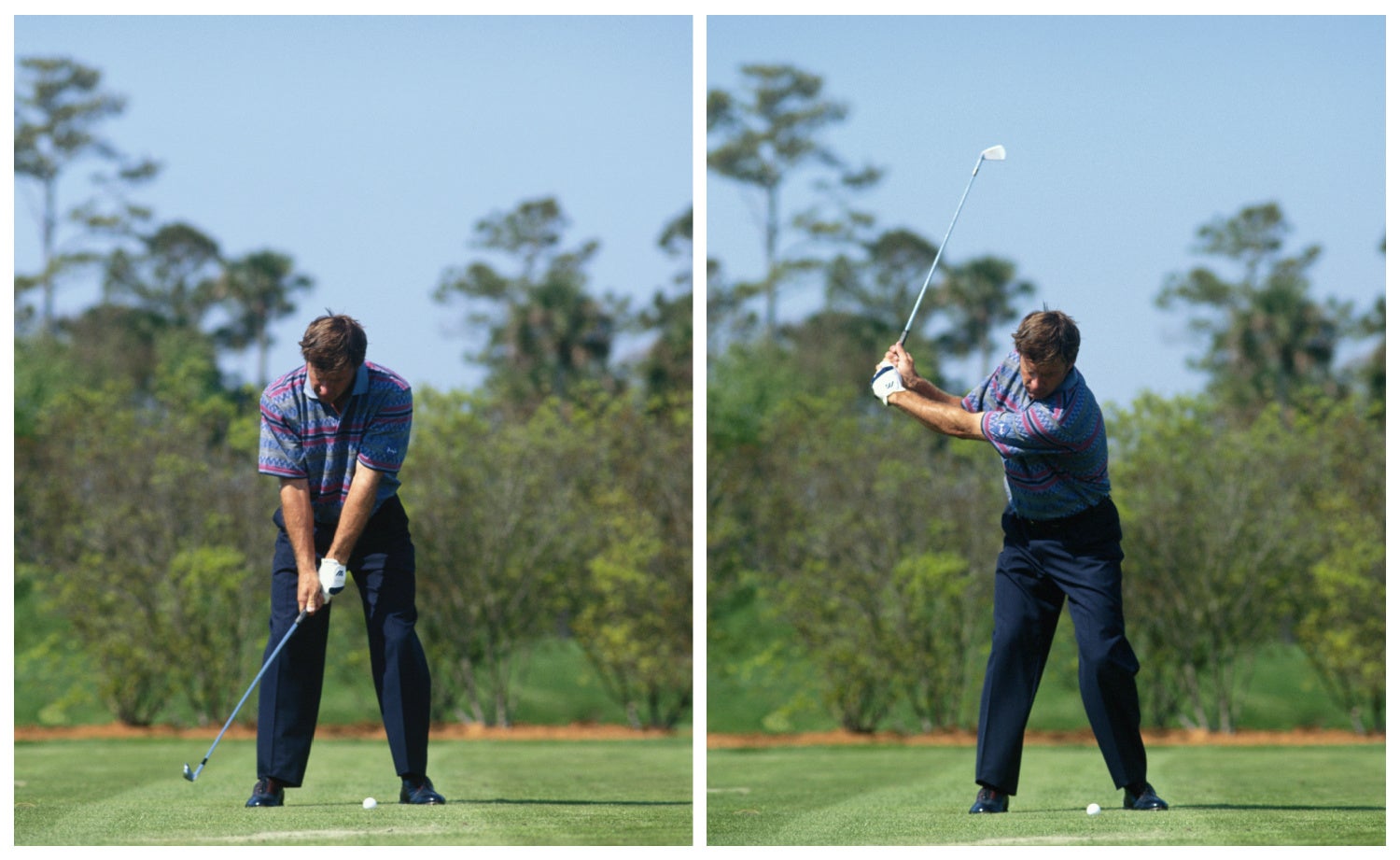Sometimes the best tips come from the past. GOLF Teacher to Watch Kelvin Kelley breaks down a few of his favorites.
Getty Images
There are many great golf swings from the past that we can learn from. Although technology has changed the course of the game and to a small extent the swing, there are still key moves from these swings that promote great ball striking. Here are components of five timeless swings that can help your game.

1. Ben Hogan’s hip speed
We start off with the most recognized golf swing of all time, Ben Hogan. But what I like about his swing is something that is often overlooked: His ability to stay closed with his body in the downswing. Hogan cleared his hips to the target, but only at the most efficient time. Above is a picture of moments before impact then through the ball. Note how his left side is still in the way pre-impact, with his shoulders more square to the ball than his hips, which are rotating towards the target. From here he was able to hit it hard with the right side of his body enabling the club face to keep square to his body through impact. Hogan spoke of clearing with his hips from the top of his swing, however in reality he did otherwise. Getting into this closed off position is a powerful way to strike a golf ball.

2. Peter Thompson’s setup
When you think of simple, powerful and repeatable golf swings you think of Peter Thompson. The beauty of Thompson’s swing actually lies in his set-up. In the picture above, note how Thompson’s right arm is tucked and bent, underneath his left arm. This drops his right shoulder below his left, setting his body up to be in a great position at the top.
Thompson has simply pre-set angles from his impact position. Doing so has made the impact position easier to find, causing far less moving parts of the body. From the address position he created he can coil around his original spine angle. This is why Thompson’s swing is regarded as one of the most effortless and simple swings of all time.

3. Nick Faldo’s Takeaway
The key to Nick Faldo’s golf swing is in his takeaway. The first two feet the club swings back sets the sequence for the entire golf swing. When rebuilding his swing in 1985, Faldo and his coach realized the importance of this. Faldo would spend countless hours “pre-setting” the club to hip high then begin the swing from that position. Here is that pre-set position.
The clubhead must travel the furthest in the backswing, so it needs to move first. Once the club moves, the hands will move with the arms. The arms will then pull the shoulders around which pulls the chest, hips and lastly the knees. This creates a coil position at the top. Not only does this takeaway set the proper sequence, but this is a similar position the shaft and body is in at that point in the downswing.

4. George Knudson’s body motions
Knudson’s swing has known to have one of the best body motions in the history of the game. Another efficient and powerful looking golf swing, what stands out is the way his lower body works. Knudson does an incredible job of “keeping the gap” between his knees throughout the swing.
In the backswing, Knudson has loaded his glutes, turning from the groin. As a product of this, his knees have moved slightly in. At impact, he maintains this space between his knees. This is an indication that he hasn’t over-used or needed his lower body to recover in the downswing. Another valuable trait is that he has maintained slight flex in his left knee. This allows him to move more athletically through the ball.
5. Nick Price
Price has one of the most recognizable transitions from backswing to downswing in the game. Price gets the shaft going back more vertical in the backswing only to shallow it out horizontally early in transition. This early transition move allows Price to rotate through the ball trapping the ball from an inside path.
The steep to shallow move is a product of his change in elbow lines that can be seen from down the line. In the backswing, Price keeps his right arm and elbow slightly above his left. In transition, he drops his right elbow below the left, shallowing out the club. This is similar to how the arm works when throwing a ball. When you throw a ball, your elbow will work inwards in transition which transfers energy to throw.









